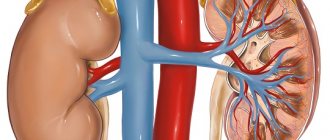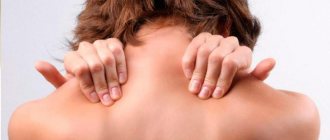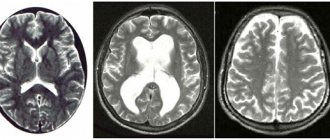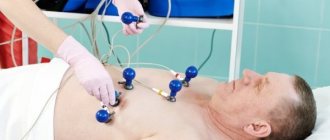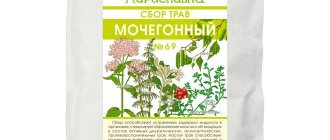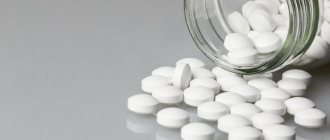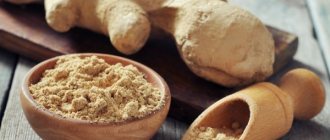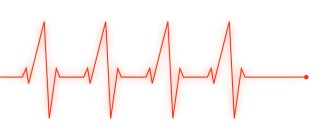In the complex treatment of hypotension, experts recommend the use of herbs that increase blood pressure. Thanks to the healing properties of herbs, they allow you to normalize blood pressure without the use of synthetic drugs. Regular intake of herbal tinctures, infusions and decoctions will eliminate the negative manifestations of low blood pressure, such as fatigue, drowsiness, dizziness, and headaches. What herbs are used to eliminate hypotension and how to take them correctly to achieve a therapeutic effect?
What is blood pressure
Blood circulation in the body is ensured by the cardiovascular system. The heart, working like a pump, pumps blood into large vessels - arteries and veins.
As blood passes through the arteries, it puts pressure on their walls:
- greatest – during maximum contraction of the heart muscle,
- the least - with relaxation.
Blood pressure is determined using these two indicators. The first value is called systolic, or upper. The second is diastolic, or lower.
Normal blood pressure is 120/80 mmHg. Under the influence of various factors, it can change both upward and downward.
Principles of application
There are many ways to use herbs for low blood pressure. Based on them, you can prepare alcoholic tinctures, decoctions and infusions. The products are highly effective, but when preparing them, you should adhere to the specified dosage of dry matter. For treatment, not one plant is used, but herbal preparations, due to which the maximum hypertensive effect is achieved. Medicines are prepared from dry collection of leaves, flowers and stems. Today, you can buy ready-made alcohol tinctures, extracts from herbal extracts or tablets at the pharmacy.
Important! The duration of the therapeutic course is from 2 to 4 weeks, during which 1-2 traditional medicine recipes are used. Then the hypotensive patient is recommended to take a break, then they are replaced with new recipes in order to prevent the development of tolerance in the body.
Low blood pressure
The decrease in pressure is caused by the dilation of blood vessels. Temporary changes of 20 mm Hg. Art. are not considered a pathology, they are classified as a slight decrease.
Decreased blood pressure below 90/60 mmHg. Art. – called hypotension, or hypotension.
Sometimes low levels can occur without deterioration in well-being. Such hypotension is considered physiological, i.e. just the state of the body. It can be an individual version of the norm and be constant throughout life. It also occurs in athletes or in certain conditions that require adaptation of the body - heavy sweating during the heat, climbing at high altitudes, etc.
When low blood pressure is accompanied by certain symptoms that disrupt a normal lifestyle, it is considered pathological.
Causes of low blood pressure
- Violation of nervous and endocrine regulation;
- Psycho-emotional stress;
- Physical and mental stress;
- Various diseases - myocardial infarction, thyroid hormone deficiency, etc.;
- Taking certain medications - antidepressants, diuretics, antihypertensives, etc.;
Symptoms of hypotension
- Constant fatigue;
- fast fatiguability;
- psycho-emotional instability;
- decreased physical and mental performance;
- frequent headache, especially in the morning;
- heart rhythm disturbances;
And other signs.
If the decrease in pressure occurs suddenly and severely, then emergency medical care is needed. Acute hypotension can be a consequence of shock, myocardial infarction and other conditions that require immediate medical intervention.
Features of treatment
Hypotension is a persistent decrease in blood pressure less than 100/60 mm. rt. Art. Young people, especially women, are susceptible to the disease. With prolonged hypotension, complex treatment aimed at strengthening the vascular system is necessary. Most patients prefer medicinal herbs, as they have a gentle effect on blood vessels and do not affect the functioning of other organs and systems.
Medicinal plants should be taken if the following signs of pathology are present:
- attacks of headaches;
- dizziness;
- darkening of the eyes;
- fainting;
- decreased performance;
- drowsiness;
- lethargy, malaise.
As a rule, herbs to increase blood pressure are taken in courses, since biologically active substances tend to accumulate in the body, causing addiction. The therapeutic effectiveness of herbal medicine is individual for each patient, which depends on the choice of plant and its healing properties.
Before starting therapy, you should consult a specialist, since parallel use of herbs and drugs can enhance or reduce the effectiveness of each other. Herbs are used as the main therapy at the initial stage of hypotension, but long-term treatment is not recommended, since herbal medicine is auxiliary.
Medicinal herbs for low blood pressure
Chronic hypotension is treated with complex measures, including herbal medicine.
List of herbs used for hypotension:
Adaptogenic, tonic plants – strengthen the body’s resistance to stress and negative influences. These herbs include:
- Panax ginseng
- Eleutherococcus senticosus;
- Aralia Manchurian;
- high zamanikha (echinopax high);
- Schisandra chinensis;
- Rhodiola rosea;
- ephedra horsetail;
Plants that affect the vasomotor center and have a cardiotonic effect - affecting the heart:
- Thermopsis lanceolata;
- prickly tartar.
Plants with sedative and antidepressant properties - used to aggravate conditions associated with stress and tension. Among the calming herbs that help with hypotension are:
- peppermint;
- evasive peony;
- St. John's wort.
The increase in blood pressure by plants occurs due to the normalization of the nervous system and improved blood circulation. As a result of the action of substances contained in herbs, the walls are strengthened and vascular tone is regulated, and the strength of heart contractions increases.
Indications for use
- Arterial hypotension;
- Mental and psycho-emotional fatigue;
- Muscle weakness;
- The recovery period after infectious and organic diseases.
Contraindications and precautions
Contraindications for the use of all plants for hypotension:
- Pregnancy;
- Lactation period;
Contraindications for plants with adaptogenic action:
- Epilepsy;
- Arterial hypertension;
- Increased nervous excitability;
- Insomnia;
- Age up to 12 years.
If you have problems falling asleep or insomnia, it is not recommended to take tonic herbs in the afternoon. The optimal time for taking is the morning.
The course of treatment with herbal adaptogens is on average 3 weeks.
With indiscriminate and uncontrolled use of tonic plants, side effects may occur:
- Excessive increase in blood pressure;
- Psycho-emotional agitation;
- Exhaustion of the nervous system;
- Allergic reactions.
Treatment of hypotension: medicinal plants and herbs
Dear friends, in this article we will tell you about which medicinal plants and bee products help cope with hypotension - low blood pressure.
However, for completeness, we recommend that you first read the previous article on treating hypotension.
Many authors on the Internet suggest drinking tincture of ginseng or Rhodiola rosea, or Eleutherococcus for hypotension.
But I will recommend that you take other medicinal plants for hypotension.
Because, for example, eleutherococcus and ginseng can even at the first dose have the effect of increasing heart rate, but there is no guarantee that they will increase vascular tone. And accordingly, they can not only NOT increase blood pressure in a person suffering from hypotension - in some cases they can even lower blood pressure!
As for Rhodiola extract... Reviews of this extract are often positive. But some people in the reviews reported that after rapid improvement, their condition sometimes quickly worsened. So everything here is ambiguous... In general, we will offer you several other medicinal plants to treat hypotension.
Yarrow
Sold in pharmacies in herbal form. On the one hand, yarrow itself practically does not increase blood pressure. But it reduces bleeding, that is, the tendency to bleed.
For example, if a person has developed anemia due to internal or heavy nosebleeds, or a woman has developed anemia due to heavy menstruation, and against this background the pressure has decreased, yarrow will be very useful. At the same time, the active substances of yarrow do not lead to the formation of blood clots.
In addition, yarrow increases appetite. And this is useful if anemia or hypotension has developed due to loss of appetite.
It also generally calms the nervous system and acts as a mild antidepressant.
You just need to keep in mind that yarrow does not act quickly, it needs to be taken for 1 month, maximum 2 months.
How to take yarrow.
We buy Yarrow herb at the pharmacy and make an infusion from it.
To prepare the infusion, pour 2 tablespoons of yarrow herb into a thermos, pour 200 ml of boiling water, close the thermos tightly, and let it brew for 30–60 minutes.
Then open the thermos, let the infusion cool slightly, and then strain through cheesecloth or a strainer. Add a little boiled water so that the volume of the resulting yarrow infusion is 200 ml.
The resulting infusion should be taken warm, 2-3 tbsp. spoons (30–45 ml) 2–3 times a day, 10–30 minutes before meals.
Important: the prepared infusion of yarrow herb should be stored in a cool place for no more than 2 days.
In total, the course of treatment with yarrow infusion, as we have already said, is 1–2 months.
The next time you can repeat the yarrow treatment cycle after 3–6 months.
Contraindications: hypersensitivity to the drug, pregnancy, lactation, children under 12 years of age.
We emphasize! Yarrow preparations should not be used during pregnancy.
Yarrow has very few side effects. But occasionally there are allergic reactions to yarrow itself - this must be kept in mind.
Very rarely - some people experience heartburn when taking yarrow.
Aralia Manchurian, Aralia Manchurian tincture
Quite a strong medicinal plant. Good for raising blood pressure.
And, according to some scientific data, in terms of stimulation of the nervous system, it is more active than ginseng tincture.
Has a general tonic effect.
Improves appetite, reduces the feeling of fatigue, strengthens the nervous system.
Increases immunity.
Reduces blood sugar levels.
Indications for use. Low blood pressure, asthenic syndrome, decreased libido, mental exhaustion, depression; condition after meningitis or after traumatic brain injury, concussion; ARVI (as part of complex therapy), enuresis, post-influenza arachnoiditis, radiation sickness, physical and mental fatigue.
But aralia has contraindications: Hypersensitivity to the drug, increased excitability, arterial hypertension, epilepsy, hyperkinesis. Sometimes - insomnia.
The drug is not recommended for use during pregnancy, lactation and children under 12 years of age.
Directions for use: Adults and children over 12 years of age are prescribed 30–40 drops orally 2 times a day (morning and midday) after meals. The course of treatment is 15–30 days. Repeated course - on the recommendation of a doctor.
The drug should not be used in the afternoon to avoid sleep disturbances. Note: to avoid unusual individual reactions, it is better to start taking the drug with a dose of 10 drops 2 times a day, the next day take 15 drops 2 times a day, and from the 3rd day take the already prescribed 30-40 drops 2 times a day .
It is important to know! This drug does not always act quickly; sometimes the effect develops only after 7–14 days from the start of use.
Side effects: Allergic reactions, insomnia, tachycardia, excessive increase in blood pressure, euphoria.
Interaction with other drugs Potentiation of the action of stimulants and analeptics (caffeine, camphor, phenamine, etc.) is possible; the drug is a physiological antagonist of the hypnotic effect of drugs that depress the central nervous system (including barbiturates, tranquilizers, anticonvulsants, etc.).
Leuzea, liquid extract of Leuzea safflower
Another good medicinal plant for the treatment of hypotension.
Has an adaptogenic and general tonic effect:
Increases mental performance, reduces fatigue, improves memory, potency, and increases the ability to concentrate.
Increases the body's resistance to adverse environmental influences and physical stress.
Promotes the accumulation of glycogen and ATP in skeletal muscles, liver and heart, reduces glucose concentration during adrenaline hyperglycemia.
Reduces cholesterol levels.
Indications
As part of combination therapy: asthenia, physical and mental fatigue, decreased potency, recovery period after infections.
Contraindications
High blood pressure, arrhythmias, acute period of infectious diseases, increased nervous excitability, epilepsy, sleep disorders, chronic liver and kidney diseases, chronic alcoholism (for dosage forms containing ethanol), pregnancy, lactation, children's age (up to 12 years), increased sensitivity to herbal remedies.
Dosage
Taken orally. Drops and extract for oral administration: 20–30 drops. 2–3 times/day, during meals.
The course of treatment is 2–3 weeks. Note: to avoid unusual individual reactions, it is better to start taking the drug with a dose of 10 drops 2 times a day, the next day take 15 drops 2 times a day, and from the 3rd day take the already prescribed 20-30 drops 2 times a day .
Side effects
Possible: excessive increase in blood pressure, headache, irritability, insomnia, dyspepsia; allergic reactions.
special instructions
To avoid sleep disturbance, it should not be used in the afternoon, later than 3-4 hours before bedtime.
Schisandra, tincture of lemongrass fruits
Another quite effective medicinal plant.
But it acts a little differently - it has a general tonic and psychostimulating effect.
Enhances excitation processes in brain structures and reflex activity, increases performance and reduces fatigue during physical and mental stress.
Indications
Asthenia, the period of recovery after somatic and infectious diseases;
activities associated with great neuropsychic and physical stress; decreased performance;
sexual dysfunction due to neurasthenia (as part of complex therapy).
Contraindications
High blood pressure, increased excitability, epilepsy, insomnia, acute period - infectious and viral diseases, liver failure, pregnancy, lactation, children under 12 years of age, hypersensitivity to this herbal remedy.
Dosage
Tincture of lemongrass fruits is prescribed orally, 20–30 drops. But in the first 2-3 days, it is better to start treatment with 10 drops, and increase the dose gradually, in order to avoid unusual individual reactions.
Use on an empty stomach or 4 hours after meals, 2 times a day, in the morning or afternoon.
Should not be taken in the afternoon (to avoid sleep disturbance).
The course of treatment is 2 weeks; if necessary, the course can be repeated after 3–4 weeks.
Side effects
Possible: allergic reactions, tachycardia, insomnia, headache.
Drug interactions
Enhances the effect of psychostimulants and analeptics (including caffeine, camphor, phenamine).
It is a physiological antagonist of the hypnotic effect of drugs that depress the central nervous system (including barbiturates, tranquilizers, antiepileptics, sedatives, antipsychotics).
Bee products – Pollen / beebread
Useful if hypotension is combined with anemia, low hemoglobin, lack of B vitamins or reduced immunity.
Bee pollen - it is better to buy small ones, in bags. Pour into a dry, baked glass jar with a screw-on lid. Store pollen in a dark place, but not in the refrigerator!
Take 1/3 teaspoon 1 time per day, at any time of the day, with slightly warm (but not hot!) tea or warm water = take at least 1 month, maximum 2 months.
Important! Take pollen from the jar only with a perfectly dry spoon! Do not allow moisture to get into the container with pollen!
It is important to understand that the effect of pollen treatment is not quick - it must be taken for at least 1 month, maximum 2 months.
NOTE There is a more effective beekeeping product than pollen. It's called PERGA. If possible, it is better to buy bee bread (although it is more difficult to buy). The effect of using bee bread will be higher. The dosage and method of use will need to be clarified with the manufacturer.
Note! Beekeeping products also have their own contraindications and side effects. Read the manufacturers' instructions on the packaging carefully!
In conclusion, we would like to emphasize that when treating hypotension there is no need to mix different medicinal plants with each other. Use one thing first. If one medicinal plant does not work, then you can try a second, then a third - but not all at once!
The author of the article is Dr. Evdokimenko©. Published 02/05/2019. All rights reserved. Help in writing the article: our consultant and expert is Kirill Alekseevich Kasabov, employee of the V.V. Zakusov Research Institute of Pharmacology.
You might be interested in:
- Video about treating hypotension with herbs
- Causes of high blood pressure and treatment of hypertension
- The effect of stress on the body
Effective plants for hypotension
The greatest effect in the treatment of low blood pressure is exerted by a group of tonic and adaptogenic plants. Herbs that influence the functioning of the heart and vascular tone give good results. But most often they are used as part of preparations to enhance and complement the action.
Plants with calming and antidepressant properties are used in the complex treatment of hypotension, when low blood pressure is caused by psycho-emotional stress and aggravated by anxiety.
Panax ginseng
The roots of common ginseng have medicinal value. They are rich in essential and fatty oils, B vitamins, triterpene glycosides and panaxosides, characteristic only of this plant.
As a result of using ginseng root, the reflex function of the brain is enhanced. But ginseng has a peculiarity in this effect: the effect depends on the dose taken. In small dosages, the substances increase blood pressure, in large doses, on the contrary, they lower it.
Under the influence of panaxosides, heart contractions increase and blood supply to the brain improves. As a result, fatigue decreases and the body's resistance to various stress factors increases.
In addition to the general contraindications for adaptogens, ginseng should not be used for bleeding disorders.
Ginseng root extract
Ginseng roots – 50 g.
- Cover the crushed roots completely with water.
- Boil until the liquid has evaporated to half its volume.
- Cool and strain.
Drink 1 tsp. morning and evening before meals.
Zamanikha high (Echinopax high)
The whole plant contains essential oil, the roots contain many saponins-echinopsosides and glycosides, and alkaloids are present in small quantities.
The rhizome with roots is used as a stimulant and antihypotonic agent. Zamanikha improves blood circulation in the body, strengthens contractions of the heart muscle and slows down the rhythm. Just like ginseng, in small doses it increases blood pressure, in large doses it lowers it.
High lure tincture
Ingredients:
- Roots of tall zamanikha - 1 tbsp. l.;
- alcohol 70% – 200 ml.
Preparation:
- Pour alcohol into the roots in a dark glass container.
- Leave for 2 weeks in a dark place.
- Filter the finished tincture.
Take 30 drops per glass of water 1 time in the morning. The course of treatment is 1 month.
Schisandra chinensis
The fruits of Schisandra chinensis are used for medicinal purposes, the seeds of which contain tonic substances – schisandrol and schisandrin. Under their influence, the functioning of the heart and respiratory system improves, the excitability of the central nervous system increases, and as a result, blood pressure increases.
Contraindications to taking Schisandra chinensis fruits are increased intracranial pressure, heart failure, gastric and duodenal ulcers.
In case of overdose, tachycardia is possible.
Infusion of Schisandra chinensis fruits
Schisandra berries – 1 tbsp. l.
- Pour 1 cup of boiling water over the lemongrass fruits.
- Leave for 2 hours.
- Strain and squeeze.
Take 2 tbsp. l. 2 times a day on an empty stomach.
Liquorice root
Licorice root is used in the manufacture of various syrups due to its sweet taste. The active substance is glycyrrhizin, which has a humoral mechanism of action. The active component helps stimulate aldosterone, increasing its concentration. Aldosterone is produced by the adrenal glands; the hormone causes the retention of sodium and water ions, which provokes an increase in blood pressure. Long-term use of licorice is contraindicated; it can lead to the development of hypokalemia, a condition in which potassium concentration is significantly reduced.
Hypertensive tea from the plant:
- In 1 tsp. add 200 ml of boiling water to the crushed root;
- cover the container, leave for 7-10 minutes;
- strain before use;
- Take warm 2 times a day before meals.
It is not recommended to take licorice-based products for patients with diabetes mellitus, since the root contains a high concentration of monosaccharides.
Eleutherococcus senticosus
The action of Eleutherococcus senticosus, like other plant adaptogens, is due to specific glycosides. Eleutherosides contained in the root increase the diameter of capillaries, which improves blood supply to the brain and heart. Eleutherosides also increase the production of endorphins, neurotransmitters responsible for pain relief and a sense of pleasure.
Eleutherococcus is contraindicated in acute infectious diseases and fever.
Eleutherococcus senticosus tincture
Ingredients:
- Eleutherococcus senticosus roots 100 g;
- Alcohol 40% (vodka) – 1 l.
Preparation:
- Pour 1 liter of vodka over the roots.
- Leave in a dark place for a week.
- Strain the finished tincture.
Drink 1 dessert spoon 2-3 times a day. Course of treatment – 1 month.
Taking ginseng
Ginseng is a powerful stimulant of the central nervous system, the effect of which is similar to caffeine. The plant has vasodilating properties, so products based on it help enhance excitation processes in the brain. The high content of antioxidants and vitamin C binds free radicals in the body, which serves as a prevention of cancer.
Ginseng root strengthens the myocardium, thereby having a beneficial effect on the tone of the vascular system
The use of ginseng preparations normalizes the following processes in the body:
- eliminates headaches, dizziness;
- increases endurance;
- increases performance;
- eliminates mental and physical fatigue.
Ginseng is a versatile herb, as it not only increases blood pressure in cases of hypotension, but also helps reduce it in cases of hypertension.
Preparation of hypertensive tincture:
- 10 gr. crushed ginseng root pour 0.5 liters of 40% alcohol;
- Leave in a dark place for 10 days.
- Strain the tincture before using.
- Take 10-20 drops 2 times a day.
- The treatment course lasts from 2 to 3 weeks.
Aralia Manchurian
The main effect of Manchurian aralia is ensured by the activity of triterpene saponins - aralosides. The roots are used as medicinal raw materials, which have a tonic effect in case of weakness, fatigue, and poor circulation. Along with the normalization of blood pressure and vascular tone, there is an improvement in sleep and memory.
Aralia root decoction
Aralia Manchurian roots 1 tbsp. l.
- Pour a glass of boiling water over the raw materials.
- Boil in a water bath for 30 minutes.
- Cool at room temperature for 10 minutes.
- Filter the broth and bring the volume to the original volume.
Drink 3 times a day, 1 tbsp. l. 20 minutes before meals.
Leuzea safflower
For antihypotonic purposes, the roots of Leuzea safflower are used. Raw materials have an effect on blood pressure due to the content of phytoeclysteroids and alkaloids, as well as flavonoids and vitamins. The general tonic effect develops gradually and manifests itself in the activation of metabolism, endocrine and nervous regulation, and increased adaptation to environmental factors. Under the influence of Leuzea substances, peripheral vessels dilate, which improves blood circulation. Ascorbic acid and flavonoids provide an additional effect on strengthening and tone of blood vessels.
Leuzea safflower tincture
Ingredients:
- Roots of Leuzea safflower - 1 tbsp. l.;
- Alcohol 70% – 200 ml.
Preparation:
- Pour 200 ml of 70% alcohol over the roots.
- Infuse in a dark place for 3 weeks.
- Strain and squeeze the finished tincture.
Take 15 drops in the morning for 2-3 weeks.
Mechanism of action of herbs for hypotension
Herbs that increase blood pressure affect the mechanisms that regulate blood pressure stability. Due to the effect on the smooth muscles of blood vessels, the myocardium and the rheological properties of blood, an increase in blood pressure is achieved.
The mechanism of action of plants is determined by the biologically active substances included in their composition:
- microelements;
- vitamins;
- essential oils;
- biocomponents.
Systolic pressure depends on the strength and frequency of heart contractions. When the stroke output of the heart decreases, a decrease in values occurs. Most plants have cardiotonic properties, as a result of which it is possible to increase blood pressure.
Penetrating into the body, the active components have a tonic effect on the humoral system, as a result of which the tone of the circulatory system increases. As a result of reflex excitation, the lumen of the arteries narrows and blood pressure increases.
At low pressure, the action of plants is aimed at stabilizing the following processes:
- Strengthen the activity of autonomic regulation.
- Accelerate the process of arousal.
- Stimulates the transmission of impulses in the nervous system.
- Normalizes the number of heartbeats.
- Improves the activity of the respiratory center.
- Increases the tone of the vascular system.
Rhodiola rosea
The main biologically active substances of Rhodiola rosea are tyrosol and salidroside. The roots and rhizomes have medicinal value.
Rhodiola rosea increases the oxygen content in the cells and tissues of all organs, normalizes the functioning of the nervous system. Rhodiola preparations stimulate the function of the thyroid gland, which is important for the treatment of hypotension against the background of hypothyroidism - a deficiency of the hormones of this gland.
The herb also supports the body's resistance during the cold season as a preventive measure.
Decoction of Rhodiola rosea roots
Rhodiola rosea roots – 1 tsp.
- Pour the crushed roots with a liter of hot water.
- Boil for 10 minutes.
- Leave for 10 minutes.
- Strain and squeeze out the remaining raw materials.
Drink 2-3 glasses a day.
Herbal teas for low blood pressure
If you have low blood pressure, not all types of tea can be consumed. Experts recommend that hypotensive people drink green tea because it contains caffeine, which ensures stability at low blood pressure levels. The drink stimulates brain activity, removes toxins from the body, and accelerates metabolic processes. To increase the tonometer readings, 1 tsp. raw materials are poured with boiling water and left for 7 minutes.
Herbal teas provide a burst of energy and vitality throughout the day
Monastic tea is a collection of medicinal herbs that can be purchased at a pharmacy. It contains medicinal plants:
- St. John's wort;
- spiraea;
- chamomile;
- hawthorn;
- oregano;
- thyme;
- eucalyptus.
Tea normalizes the contractile activity of the myocardium, strengthens the immune system, and increases blood pressure. The daily dose of the drink is 4 glasses.
Herbs that increase blood pressure allow you to normalize blood pressure without the use of synthetic medications, especially for people who are contraindicated in taking them. Hypotension is a dangerous pathology that can lead to circulatory failure, and therefore requires an integrated approach to treatment. So, before starting herbal medicine, hypotensive patients should consult a specialist to select the optimal dose of natural remedies to prevent the possibility of overdose.
Ephedra horsetail
All parts of the plant contain alkaloid precursors - ephedrine and pseudoephedrine. These substances release norepinephrine from reserves, a neurotransmitter that ensures the transmission of nerve impulses. As a result, blood vessels constrict, heart rate increases, and the respiratory and vasomotor centers are stimulated.
The herb is contraindicated in severe forms of heart failure, atherosclerosis, and tachycardia.
Great care is required with horsetail ephedra, as it is an alkaloid-containing plant that can lead to poisoning. In case of an overdose, agitation increases, reaching aggressive manifestations, insomnia, difficulty urinating, vomiting, and trembling throughout the body.
Ephedra decoction
Ephedra horsetail herb – 8-10 g.
- Brew 600 ml of boiling water with chopped herbs.
- Place on low heat and reduce to half volume.
- Cool and strain.
Take 1 tbsp. l. 3 times a day.
Application of lemongrass
Schisandra is the best known natural remedy for hypotension. Infusions and tinctures are widely used to eliminate the symptoms of low blood pressure. The plant normalizes heart rate, dilates blood vessels and improves breathing. After using lemongrass-based products, motor activity increases, reflex excitability increases, and fatigue of both a physical and emotional nature is eliminated.
Schisandra allows you to increase blood pressure, due to which it is an effective remedy for asthenia, depressive conditions, which are accompanied by a feeling of chronic fatigue, decreased performance, irritability, and drowsiness. After the therapeutic course, patients observe an improvement in visual function, especially at night.
Preparations made from lemongrass have virtually no side effects, but since the plant is a natural stimulant, its use must be previously agreed with the attending physician. Thus, with an overdose of drugs, complications may arise in the form of excessive stimulation of the contractile activity of the myocardium and blood vessels. Contraindicated for use in patients with elevated blood pressure.
Thermopsis lanceolata
Thermopsis contains alkaloids cytisine and thermopsin, which affect the vasomotor center, which increases vascular tone and causes their narrowing.
To increase pressure, the above-ground part of the plant is used.
Contraindicated for stomach and duodenal ulcers, children under 12 years of age, and during pregnancy and lactation.
Thermopsis grass is poisonous, so it must be used with caution, strictly following the dosage.
Thermopsis infusion
Thermopsis lanceolata herb – 2 g.
- Pour the chopped grass into 0.5 liters of warm water.
- Heat in a sealed container in a water bath for 15 minutes.
- Cool for 45 minutes.
- Strain and squeeze.
Drink 1 tbsp. l. 3 times a day. Store the infusion in a cool place for no more than 3 days.
List of herbs that increase blood pressure
Most patients prefer natural remedies because they are considered safer for the body, but they should be taken with caution. Therefore, before starting treatment, patients should find out whether the selected herbal remedy increases or decreases blood pressure.
What herbs increase blood pressure? As a rule, these are herbs that have neurostimulating properties: zamanika, sterculia, aralia, leuzea, saparal.
List of the most popular plants for raising blood pressure:
Tablets for increasing blood pressure (list)
- thyme;
- Eleutherococcus;
- ginger;
- St. John's wort;
- liquorice root;
- lemongrass;
- rosemary.
By using a herbal mixture that includes several plants, you can achieve a combined effect, resulting in an effective medicine for hypotension.
Tatarnik prickly
To increase blood pressure, the leaves and flowers of the prickly tartar are used. The herb contains alkaloids, sesquiterpene lactones, which in small quantities excite the nervous system and constrict blood vessels. Tartar raw materials have a cardiotonic effect, increasing the heart rate.
Infusion of prickly tartar
Flowers and leaves of prickly tartar – 20 g.
- Pour the crushed parts into 200 ml of boiled water.
- Leave for 4 hours.
- Strain, squeeze out the remaining raw materials.
Take 50 ml 2-3 times a day.
Contraindications
Considering the effect of all the described remedies in general, we can identify a number of conditions in which treatment is irrational and can cause significant harm to the body:
- Hypertension and symptomatic arterial hypertension.
- Pathologies with a high risk of formation of parietal or migrating blood clots (varicose veins of the lower extremities).
- The period of gestation and breastfeeding.
- Any disturbances of heart rhythm and conduction (sinus arrhythmias, displacement of the pacemaker, extrasystoles, fibrillation or flutter of the ventricles and atria, blockade).
- Sleep disorders (difficulty falling asleep, shallow and light sleep).
- Infectious and inflammatory diseases of the gastrointestinal tract of any etiology in the acute phase.
- Individual hypersensitivity to individual components of herbal remedies. Allergy is an unpredictable phenomenon; if you have a history of its manifestations, you should be especially careful.
Expert commentary
Kardash Anton Borisovich
Therapist, cardiologist. Doctor of the highest category.
When used together with drugs that affect the central nervous system and blood pressure, you should consult your doctor. The effects of medications and plants can mutually increase at standard dosages.
Medicinal fees
In addition to bulk medicinal raw materials, extracts and tinctures are produced, which can be made from one or more components. In pharmacies, tonic plants can most often be found in ready-made dosage forms.
You can prepare tonic mixtures yourself. They include not only plants with adaptogenic properties, but also with other medicinal actions necessary for the normal functioning of blood vessels.
Antihypotonic collection
Ingredients:
- Aralia Manchurian roots – 15 g;
- calendula flowers – 10 g;
- chokeberry fruits – 10 g.
- string grass – 10 g;
Preparation:
- Grind and mix the collection components.
- Pour 2 tbsp. l. collecting a glass of boiled water.
- Heat in boiling water for 15 minutes.
- Cool for 45 minutes.
- Filter and squeeze.
Take 50 ml 2 times a day.
The sequence helps to increase heart contractions and has a calming effect to some extent.
Chokeberry maintains normal elasticity and permeability of vascular walls.
Calendula can be used for heart diseases manifested by rhythm disturbances.
Tonic collection for hypotension
Ingredients:
- High zamanika roots – 20 g;
- cinnamon rose hips – 20 g;
- St. John's wort herb – 10 g;
- nettle leaves – 15 g;
- hawthorn fruits – 15 g.
Preparation of the infusion:
- Finely chop the ingredients and mix.
- Pour 2 tbsp. l. collecting 200 ml of boiling water.
- Heat in a water bath for 15 minutes.
- Cool for 45 minutes.
- Filter and squeeze out the remaining mixture.
Drink 50 ml 2-3 times a day.
Hawthorn fruits, despite the fact that they are most often used to lower blood pressure, are often included in preparations for hypotension. In such cases, the effect of hawthorn substances on heart function and improved blood circulation is involved.
Cinnamon rose hips and stinging nettle contain ascorbic acid, rutin and flavonoids, which strengthen vascular tone.
St. John's wort exhibits properties similar to the effects of antidepressants.
4 more tips
Below are the simplest recommendations regarding diet and lifestyle for women and men that will help maintain normal blood pressure:
- Dosed physical and mental activity. Any work should always be combined with breaks and changes in activities. For every 60 minutes of active exercise, at least 20 minutes of proper rest are required.
- Balanced diet. Up to 30% of the diet should be fresh vegetables and fruits that have not been heat-treated. With excessive mental or physical work, the share of herbal remedies increases to 40%.
- Water-salt balance. On hot days and during periods of active work, you should drink more pure water (without other components). It is also important to consider that during physical activity, along with sweat, a massive amount of salts are removed from the body, which must be compensated. To do this, it is recommended to increase the consumption of table salt by 2 times (no more than 9 g per day) and take any multivitamin complexes (for example, Complivit).
- Rejection of bad habits. Alcohol and nicotine contained in tobacco smoke have many mechanisms of influence on blood pressure levels. When habitual intoxications are combined with various somatic pathologies, autoregulation may fail.
Sources
- Vertkin A.L., Volobuev P.M. Arterial hypotension: pathogenesis, diagnosis, treatment.
- Chulkova V.V., Poyarkova N.M., Saparklycheva S.E. Healing properties of Schisandra chinensis
- Kurkin V.A., Akushskaya A.S., Petrukhina I.K. Real ginseng: a modern view on standardization and creation of medicinal products.
- Karpuk V.V. Pharmacognosy: textbook. Minsk: BSU, 2011 – 340 p.
- Popov A.P. Herbalist. Ekaterinburg: LLC “U-Factoria”, 1999 – 560 p.
- Maznev N.I. Encyclopedia of medicinal plants. M.: Martin. 2004. – 496 p.
